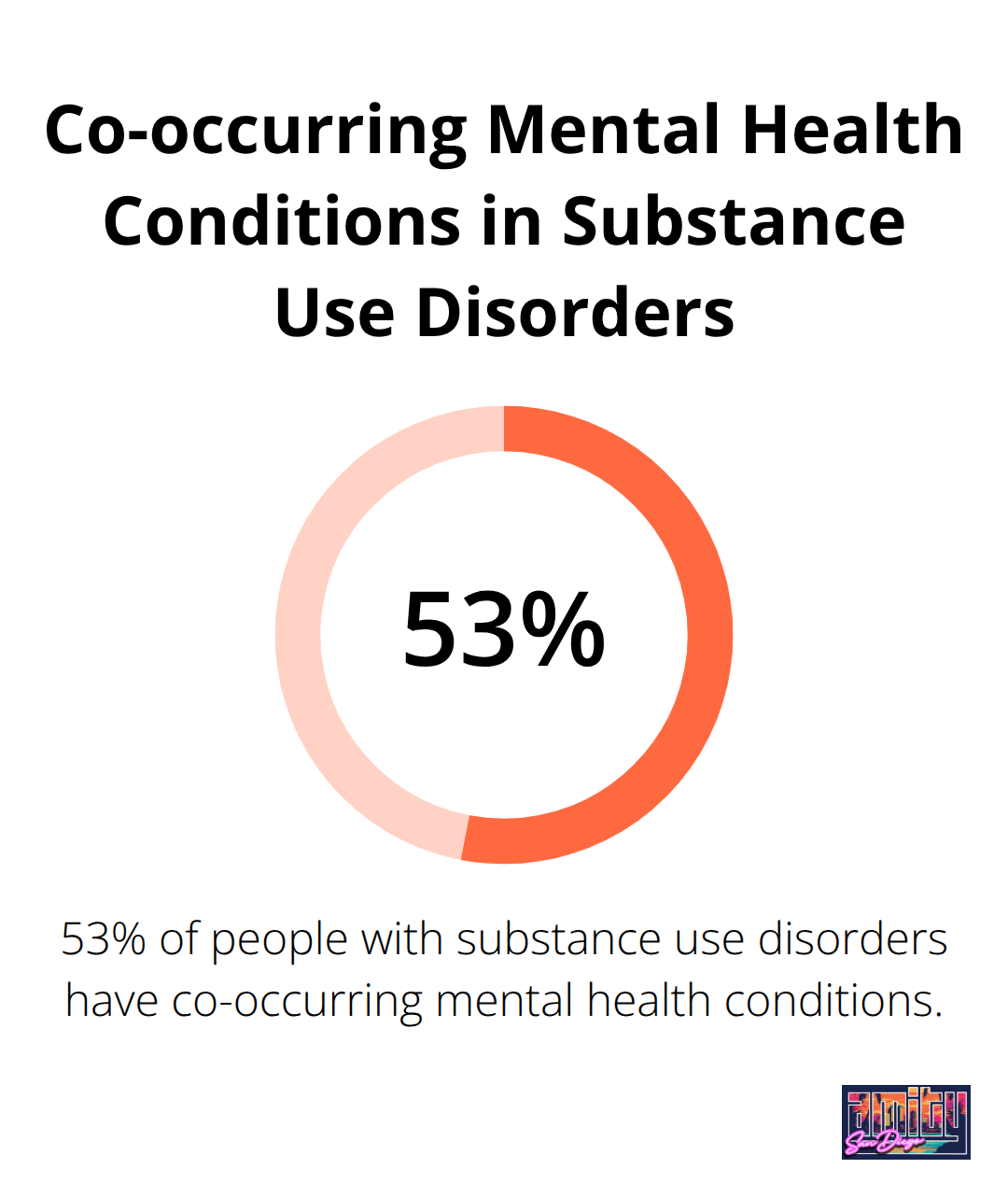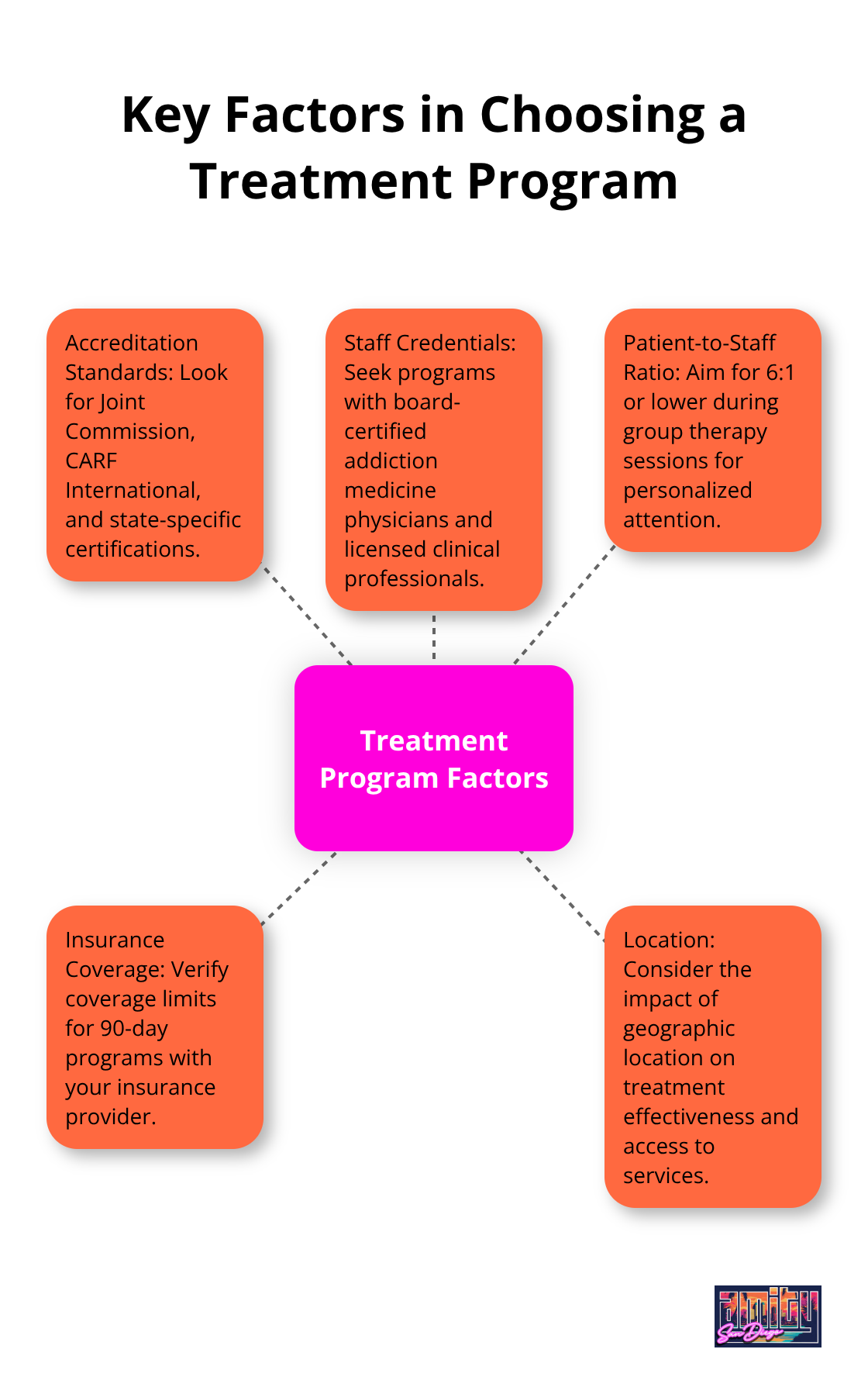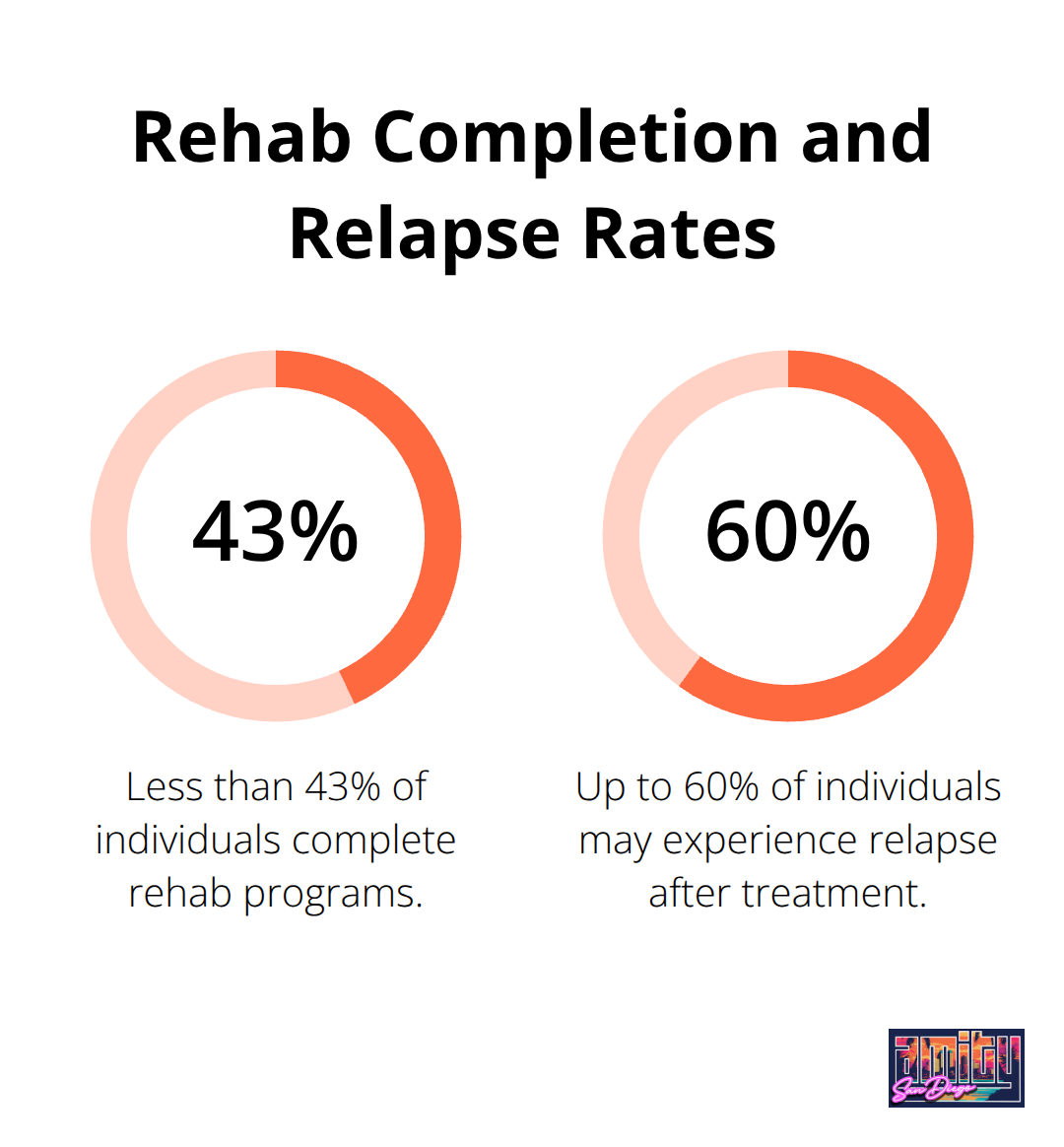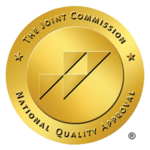Choosing the right treatment program can make the difference between lasting recovery and relapse. Research shows that 90-day drug treatment programs have significantly higher success rates than shorter alternatives.
We at Amity San Diego understand that finding quality extended care requires careful evaluation of multiple factors. This guide will help you identify the most effective long-term treatment options for sustainable recovery.
Understanding 90-Day Drug Treatment Programs
Why Extended Programs Deliver Superior Results
Research indicates that treatment programs lasting at least 90 days produce significantly better outcomes than 30-day alternatives. Short-term programs often leave clients vulnerable to relapse because they provide insufficient time to address underlying psychological issues and develop strong coping mechanisms. Extended programs allow the brain’s reward system to heal from addiction-related changes, which typically takes 60 to 90 days according to neuroscience research.
Residential vs. Outpatient Program Options
Residential 90-day programs provide 24-hour medical supervision and structured environments, making them ideal for severe addictions or multiple failed treatment attempts. Outpatient programs offer clients the ability to maintain work and family responsibilities while receiving intensive treatment through Partial Hospitalization Programs (PHP) and Intensive Outpatient Programs (IOP). Extended outpatient programs demonstrate improved outcomes for clients who complete the full duration compared to those in shorter programs.
Research-Backed Duration Benefits
Extended treatment programs show measurable benefits for client outcomes and recovery sustainability. Programs that exceed three months provide adequate time for medication-assisted treatment protocols to stabilize brain chemistry and for clients to practice new behavioral patterns in real-world situations. Extended treatment allows for comprehensive dual-diagnosis care, addressing both addiction and co-occurring mental health conditions that affect 53% of people with substance use disorders (according to the National Survey on Drug Use and Health).

With this foundation of evidence supporting extended treatment, the next step involves evaluating the specific factors that distinguish high-quality programs from mediocre options.
Key Factors to Consider When Choosing a Program
Accreditation Standards That Actually Matter
Joint Commission accreditation represents the gold standard for addiction treatment facilities, with accredited programs showing higher completion rates than non-accredited alternatives according to SAMHSA data. Programs certified by CARF International demonstrate adherence to person-centered care principles and evidence-based practices. California Department of Health Care Services certification provides additional assurance that facilities meet state-specific standards for addiction treatment. Avoid programs that lack proper licensing or operate with expired certifications, as these facilities cannot provide adequate medical oversight or insurance reimbursement.
Staff Credentials and Treatment Ratios
High-quality programs maintain patient-to-staff ratios of 6:1 or lower during group therapy sessions, compared to industry averages of 15:1 in lower-quality facilities. Look for programs that employ board-certified addiction medicine physicians, licensed clinical social workers, and certified addiction counselors with specialized training in evidence-based modalities like CBT and DBT. Programs with psychiatrists on-staff can address co-occurring mental health conditions that affect 36.5% of people with substance use disorders. Quality treatment centers prioritize low staff-to-client ratios to provide the personalized attention necessary for successful recovery outcomes.

Insurance Coverage and Payment Verification
Insurance coverage varies dramatically between programs, with some facilities that accept only private pay while others work with major insurers (including Aetna, Blue Cross Blue Shield, and Cigna). Verify coverage limits for 90-day programs, as insurance plans cover mental health and substance abuse services as essential health benefits. Contact your insurance provider directly to confirm specific benefits for extended treatment programs before you commit to any facility.
Location and Environmental Impact
Geographic location impacts treatment effectiveness, with coastal environments like San Diego that show improved outcomes due to reduced stress levels and year-round outdoor therapy opportunities. Programs located near major metropolitan areas provide better access to specialized medical services and post-treatment employment opportunities. Consider whether you prefer treatment close to home for family support or in a new environment that removes you from familiar triggers and negative influences.
These foundational elements establish program quality, but effective evaluation requires deeper investigation into specific treatment methodologies and success metrics.
Evaluating Program Quality and Effectiveness
Essential Questions for Program Assessment
Effective program evaluation requires specific questions that reveal actual treatment quality rather than marketing promises. Ask about exact staff-to-client ratios during therapy sessions, as programs with ratios above 10:1 cannot provide adequate individualized attention. Request specific success rate data measured at 6-month and 12-month post-discharge intervals, not just completion rates that many programs inflate. Programs that refuse to provide concrete outcome data or dodge questions about relapse rates typically lack confidence in their results. Inquire about board certification requirements for medical staff and credentials for therapists, as quality programs employ only properly credentialed professionals.
Success Metrics Beyond Completion Rates
Success rates vary dramatically between programs, with less than 43% completing rehab and 40-60% experiencing relapse according to research data. Programs should track multiple outcome measures that include employment status, housing stability, and relationship improvements rather than focus solely on abstinence. Quality treatment programs that measure comprehensive recovery outcomes demonstrate superior long-term client success compared to those that track only sobriety metrics. Beware of programs that claim success rates above 80%, as these figures typically represent manipulated data or cherry-picked statistics rather than authentic outcomes.

Aftercare and Alumni Support Systems
Quality programs provide structured aftercare plans that begin during the first week of treatment, not as an afterthought before discharge. Alumni programs with regular meetings, mentorship opportunities, and crisis support demonstrate institutional commitment to long-term recovery success. Family therapy integration during treatment correlates with 40% higher success rates according to Journal of Substance Abuse Treatment research. Programs should offer comprehensive aftercare support through their outpatient continuum, which maintains client engagement beyond initial treatment completion.
Family Integration and Support Networks
Programs that actively involve families in the treatment process show significantly better outcomes than those that treat addiction in isolation. Family education sessions help loved ones understand addiction as a medical condition rather than a moral failing (which affects treatment success rates). Quality facilities provide family therapy sessions, educational workshops, and support groups specifically for family members. Programs should offer clear communication channels between treatment teams and families while respecting client confidentiality requirements. National accreditation is positively associated with better treatment outcomes and program quality.
Final Thoughts
The right 90-day drug treatment program requires thorough evaluation of accreditation, staff qualifications, success rates, and aftercare support. Programs with proper licensing, low patient-to-staff ratios, and comprehensive outcome tracking demonstrate superior results compared to facilities that lack these standards. The first step toward treatment begins with honest self-assessment and insurance verification.
Contact multiple programs to compare their approaches, ask specific questions about success metrics, and request detailed information about their treatment methodologies. Quality programs welcome these inquiries and provide transparent answers about their services. We at Amity San Diego offer evidence-based outpatient programs with personalized care plans and comprehensive aftercare support in San Diego’s coastal environment.
Recovery requires commitment to extended treatment duration and active participation in support systems. The investment in quality 90-day drug treatment programs provides the foundation for lasting sobriety and improved life outcomes (with success rates significantly higher than shorter alternatives). Begin your recovery journey today by contacting accredited treatment centers that meet your specific needs and insurance requirements.



